Beef.
It’s (often) what’s for dinner.
But last Friday, when I spent the day on the Big Island courtesy of the Hawai‘i Beef Industry Council, I realized I didn’t know much about the state’s cattle industry.
As part of a #PastureToPlate tour, a group of us — from ranchers to food safety experts to writers like me (above) — visited two cattle ranches and a slaughter facility. The goal was to familiarize us with cattle ranching in Hawai‘i.
Oh, and did it!
Here’s what I learned:
1. Ranching is an important part of our economy.
The gift of cattle to Kamehameha I by Capt. George Vancouver in 1793 made a huge impact on Hawai‘i economy. An entire industry was created, with that rich cowboy (paniolo) and ranch culture still around today.
Ranchers are the stewards of more than 1 million acres of land in Hawai‘i, of 25 percent of the state’s total land mass. The Big Island produces the most of the state’s beef — and boast some of the largest cattle ranches in the U.S.
2. It’s not easy to raise, slaughter and sell Hawai‘i beef directly to the local market — but it happens.
Most cattle is grown here until about six or seven months old, then sold into the commodity market on the Mainland — the price of cattle right now is at an all-time high. Very few ranches produce beef from cows raised, finished, slaughtered and sold directly to local markets.
Why? Well, it’s more cost-effective for ranchers to sell their calves instead of finishing them here. You need lots of great pasture land for that. And after decades of sending off their calves, the infrastructure here has changed. There are only a few slaughterhouses left.
Ponoholo Ranch in Kohala, for exmpale, sells most of its calves to the Mainland after they’re weaned (about seven months old and about 400 pounds). They are sent via “cowtainers” to California or Seattle or by 747 cargo jets to L.A. The cattle are then trucked to pastures or directly to a feed yard.
There are ranches, though, that are committed to producing beef — start-to-finish in the Islands — like Kuahiwi Ranch in Ka‘ū. One hundred percent of its cattle is finished here. And cull cows, older bulls and a couple hundred grass-finished steers and heifers from Ponoholo Ranch get harvested and processed on the Big Island for the local market.
There’s also a program with Hawai‘i Ranchers that brings Hawai‘i-born cattle sent to the Mainland to finish in feed lots back to the Islands. In the program, Hawai‘i-born calves are shipped to feed lots in Oregon, where they are kept separate from cattle from other states. They receive no hormones or antibiotics, and are fed a vegetarian diet that has no animal by-product feeds and, whenever possible, has no genetically modified grains. The cows are processed on the Mainland and the meat is shipped back here.
3. Ranches are beautiful places.
I was blown away by the sheer beauty and serenity of these ranches, particularly Ponoholo Ranch (above), which sprawls over 11,000 acres from summit to sea. (This ranch was started by Ronald von Holt and Atherton Richards back in 1928. In 1980 the ranch split into two — Kahua Ranch and Ponoholo Ranch — and were jointly operated until 1989.)
The ranch covers three climate zones — from the rainforest at 4,800 feet elevation to the rugged coastline — and has the second largest herd of cattle on the island at around 6,000 heads.
The view was breathtaking, with a herd of cattle in the distance grazing and the Pacific Ocean below. I mean, people pay good money for views like that!
4. Slaughterhouses are nothing to be afraid of.
I’ll admit, I was a bit nervous — though super curious — about visiting a slaughterhouse.
Lot of gruesome images come to mind. Bloody carcasses, guts everywhere.
Turns out, Hawai‘i Beef Producers in Pa‘auilo is not like that at all.
We weren’t there on a processing day — thankfully — but we did get to tour the facility, which was so clean I could’ve licked the floor. Seriously. (We couldn’t take photos, though, probably because people — like me — would have preconceived notions — read: fears — about the process.)
The De Luz family, which has been ranching for three generations on the 10,000-acre Kukaiau Ranch nearby, runs this slaughterhouse. The beef that’s processed here is top-notch, meeting the uber-high standards of such retailers at Whole Foods Markets. (Read about the company’s animal welfare standards here.)
The slaughterhouse processes about 450 heads a month, all local cattle. And whatever that translates to in terms of beef on tables or industry revenue, it really means keeping these ranchers and processors in business.
5. You can’t beat a beef burger.
When we were touring the slaughterhouse, Jill Andrade-Mattos, the general manager, told us that Hawai‘i beef may not be the tenderest, but it’s the healthiest — and more importantly, it’s local.
She should have added, “tasty,” to that list.
Our tour ended at Āhualoa Ranch in Pa‘auilo, where chef Edwin Goto of Village Burger in Waimea prepared us lunch using Kuahiwi Ranch beef.
The patties were flavorful and juicy and grilled perfectly. Goto paired it with brioche baked at Holy’s Bakery in Kapa‘au — it’s Goto’s recipe — and locally grown tomatoes, lettuce, cheese and condiments. (I mean, you can’t eat a burger without mayonnaise!) Talk about a winner.
I mean, eating a perfect burger made from beef grown and harvested on this island, while gazing at the open pastureland of Āhualoa Ranch — how can it get any better?
Special thanks to Michelle Galimba of Kuahiwi Ranch for inviting me! For more information about Hawai‘i’s cattle industry, visit the Hawai‘i Beef Industry Council. And when you shop, look for local beef. #supportlocal

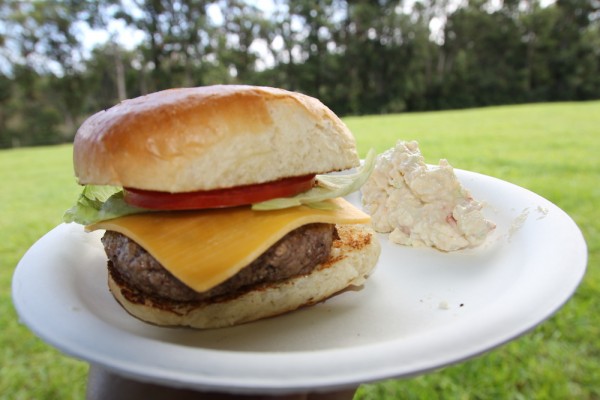
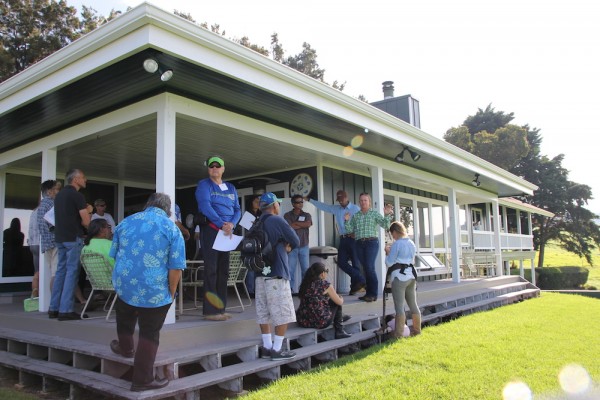
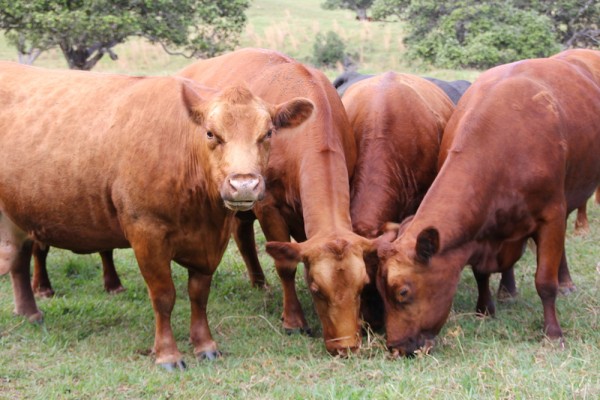
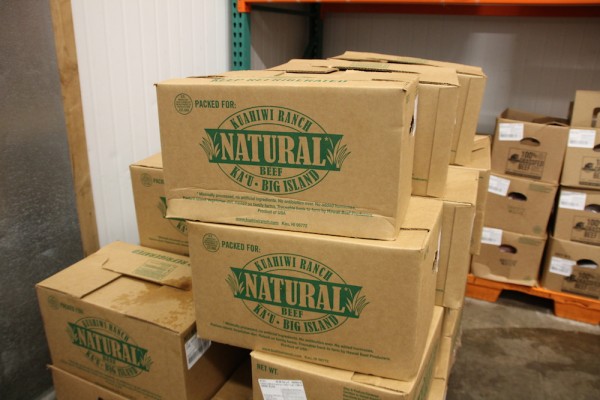

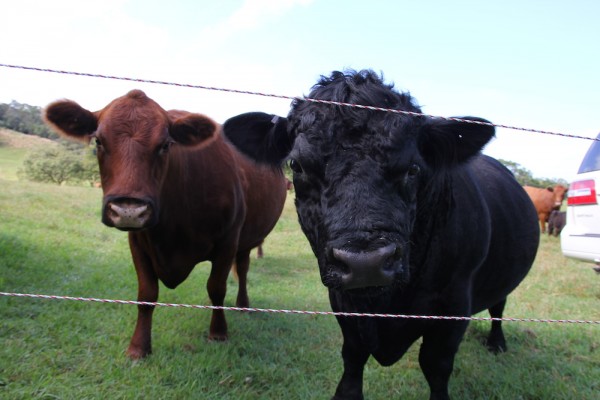
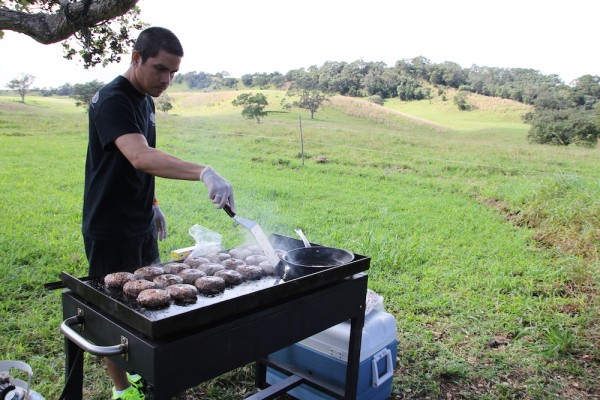
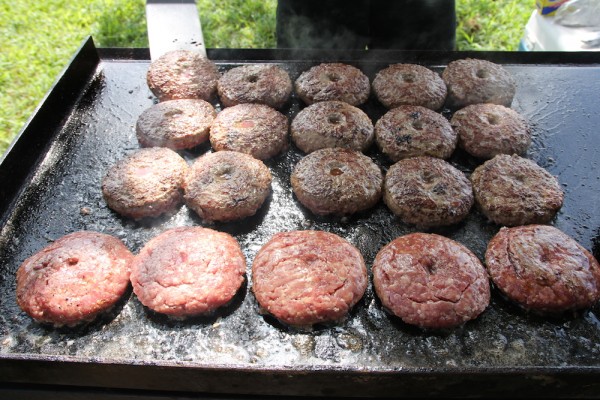

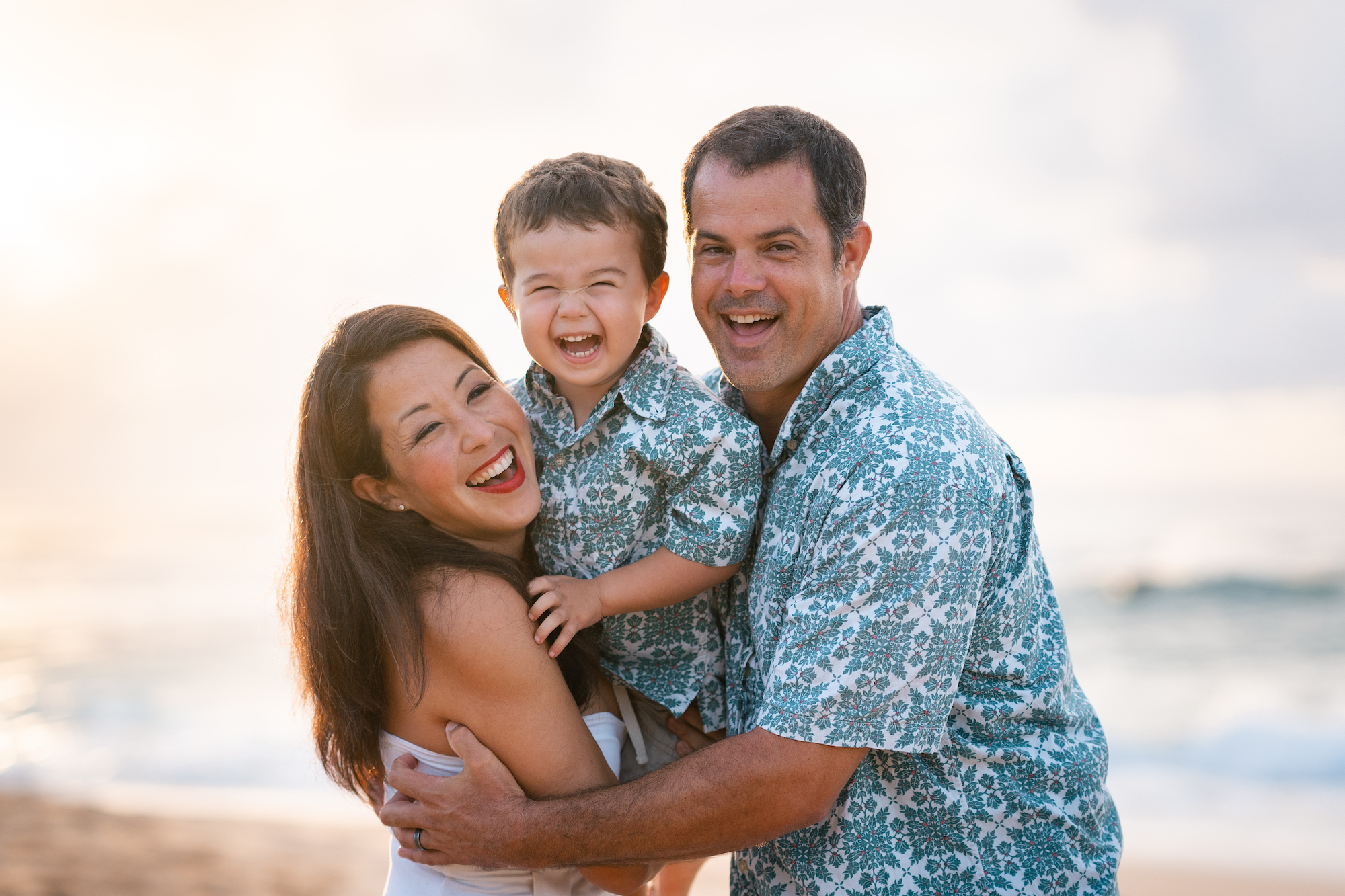

7 Comments
There are ranchers on all islands that raise beef for local consumption. We need to support these ranchers because they are making a huge financial sacrifice by doing so. I read in Hawaii Business Magazine that it could be has high as $800 a head. These ranchers are looking long-term and are committed to making Hawaii more food self-sufficient. Believe me, they all could use that extra $800 per head to pay off debt, send their kids to college and keep their operations in good repair.
CAT: I know beef tastes better after being aged after slaughter. I presume that is also true with burgers. Did you ever ask them the average number of days from slaughter to table?
Never thought of local beef. Good blog and I look forward to tying made in Hawaii one day.
I watched,! Very inspiring! Thanks Cat!
Sorry, fat fingers. The video!!! Great job.
Thanks so much for coming and for this great article!!
Hello Cat,
Many many years ago when I went to visit a friend in Hawi on the Big Island, his friend invited all of us to a cattle branding and BBQ. They fed us rocky mountain oysters. It wasn’t bad at all, in fact it was pretty good.